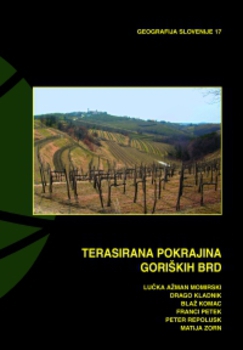Terasirana pokrajina Goriških brd
Monografija na primeru Goriških brd predstavlja slovenske izsledke v okviru mednarodnega raziskovalnega projekta, katerega glavni namen je preprečevanje propadanja terasiranih kmetijskih zemljišč v širšem območju Alp. S terasnim preoblikovanjem pobočij se povečuje obdelovalno kmetijsko zemljišče, preprečuje negativne učinke erozije, tudi erozije prsti, zadrži pa se tudi več vlage in podaljša talno vlažnost. Prevladujoča pokrajinska prvina v Goriških brdih so kulturne terase. Nekoč so terase urejali ročno, po drugi svetovni vojni pa so jih začeli graditi strojno. V zgornjih Goriških brdih je zaradi negativnih demografskih gibanj veliko nekdanjih terasiranih območij že popolnoma propadlih ali zaraščenih. Nasprotno kulturne terase v spodnjih Goriških brdih lastniki nenehno obnavljajo in posodabljajo. Knjiga ni le temeljit prispevek k obravnavi kulturnih teras, ampak je najbolj poglobljeno delo o Goriških brdih nasploh.
Prenosi

Zbirka
Licenca

To delo je licencirano pod Creative Commons Priznanje avtorstva-Nekomercialno-Brez predelav 4.0 mednarodno licenco.
